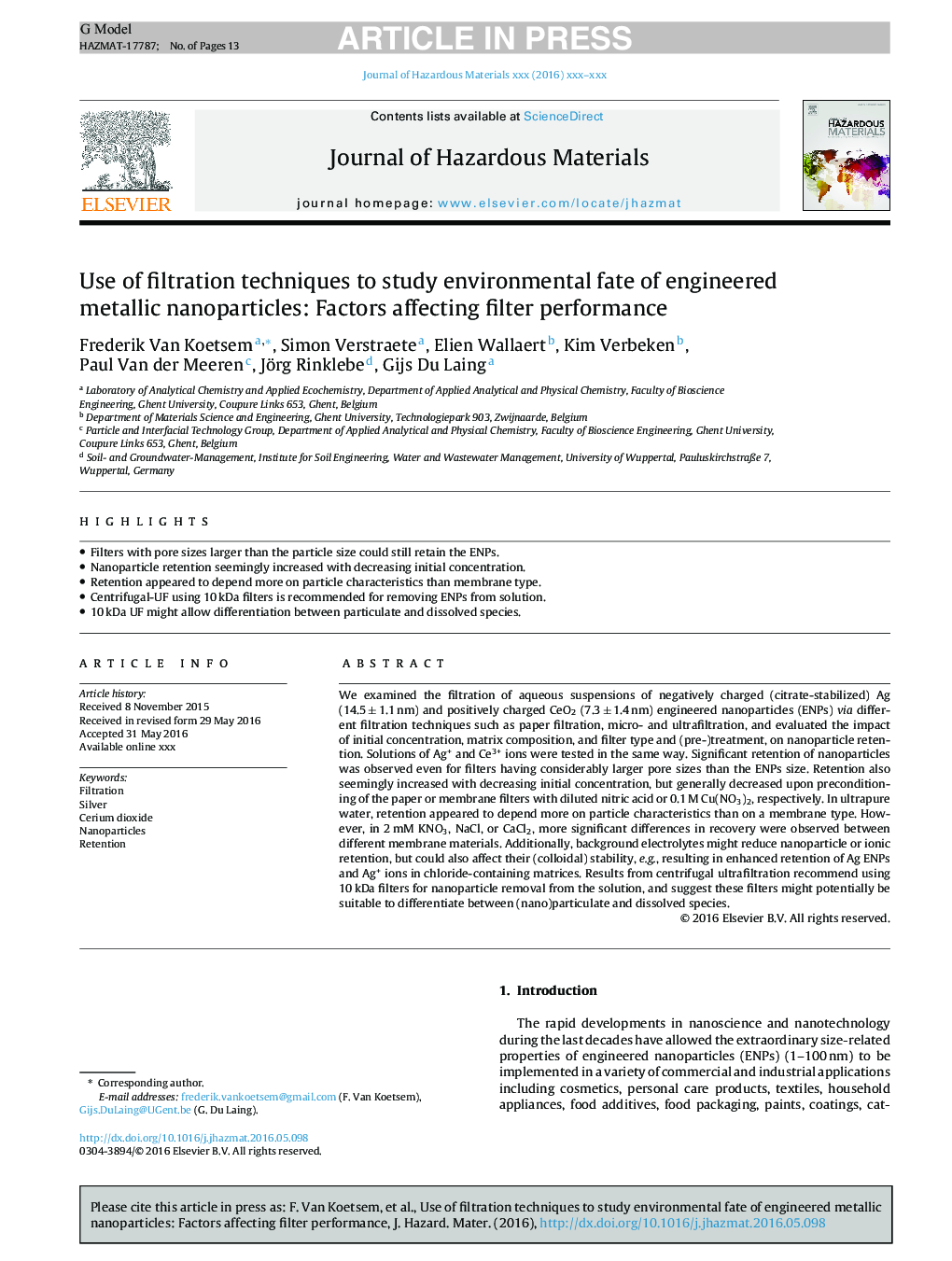| Article ID | Journal | Published Year | Pages | File Type |
|---|---|---|---|---|
| 4980127 | Journal of Hazardous Materials | 2017 | 13 Pages |
Abstract
We examined the filtration of aqueous suspensions of negatively charged (citrate-stabilized) Ag (14.5 ± 1.1 nm) and positively charged CeO2 (7.3 ± 1.4 nm) engineered nanoparticles (ENPs) via different filtration techniques such as paper filtration, micro- and ultrafiltration, and evaluated the impact of initial concentration, matrix composition, and filter type and (pre-)treatment, on nanoparticle retention. Solutions of Ag+ and Ce3+ ions were tested in the same way. Significant retention of nanoparticles was observed even for filters having considerably larger pore sizes than the ENPs size. Retention also seemingly increased with decreasing initial concentration, but generally decreased upon preconditioning of the paper or membrane filters with diluted nitric acid or 0.1 M Cu(NO3)2, respectively. In ultrapure water, retention appeared to depend more on particle characteristics than on a membrane type. However, in 2 mM KNO3, NaCl, or CaCl2, more significant differences in recovery were observed between different membrane materials. Additionally, background electrolytes might reduce nanoparticle or ionic retention, but could also affect their (colloidal) stability, e.g., resulting in enhanced retention of Ag ENPs and Ag+ ions in chloride-containing matrices. Results from centrifugal ultrafiltration recommend using 10 kDa filters for nanoparticle removal from the solution, and suggest these filters might potentially be suitable to differentiate between (nano)particulate and dissolved species.
Related Topics
Physical Sciences and Engineering
Chemical Engineering
Chemical Health and Safety
Authors
Frederik Van Koetsem, Simon Verstraete, Elien Wallaert, Kim Verbeken, Paul Van der Meeren, Jörg Rinklebe, Gijs Du Laing,
